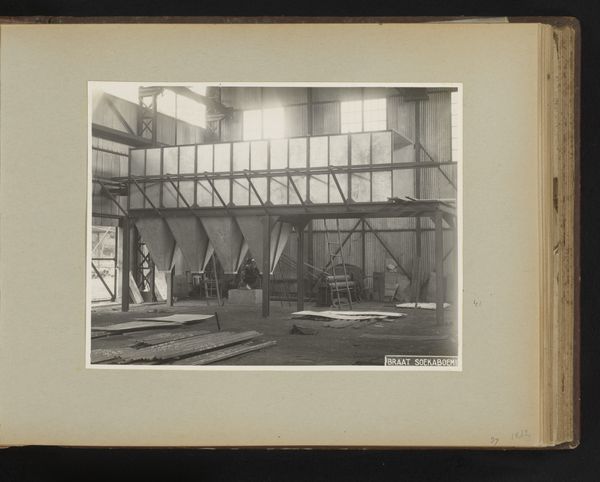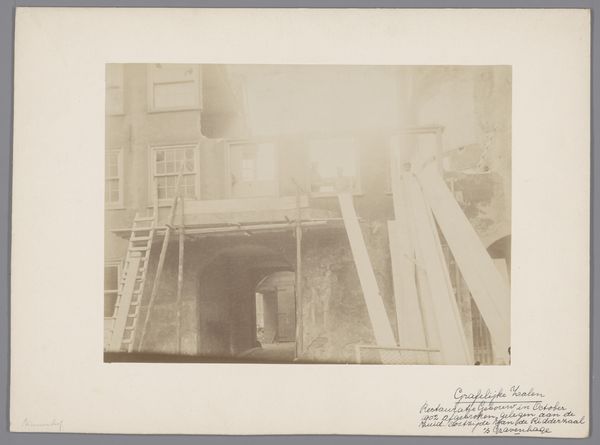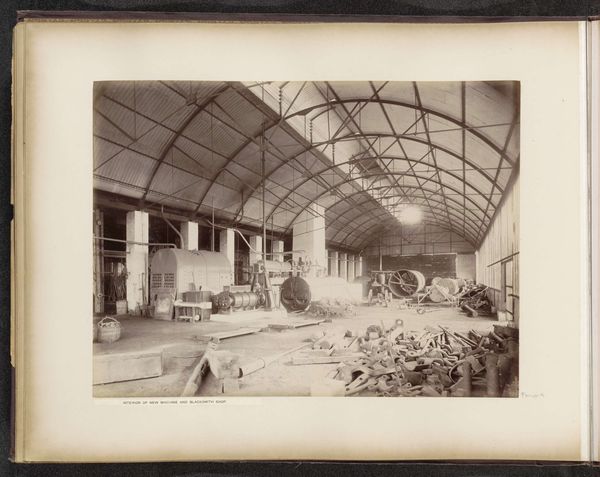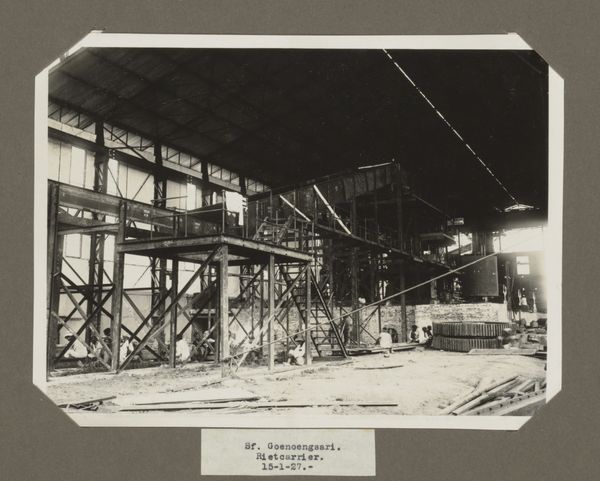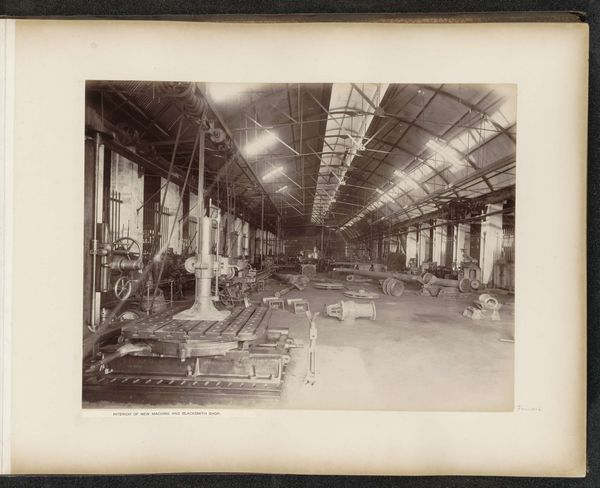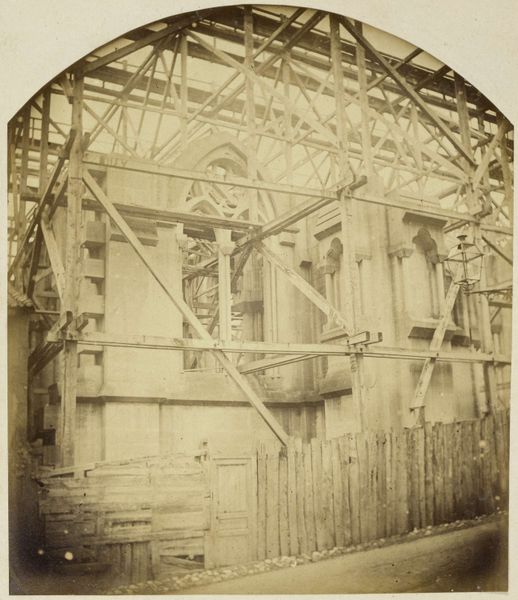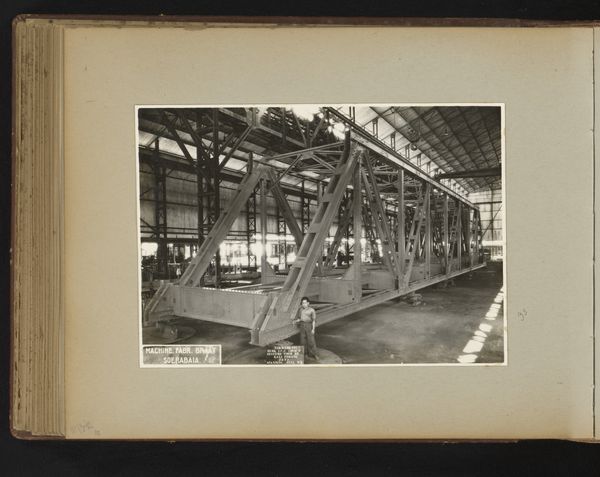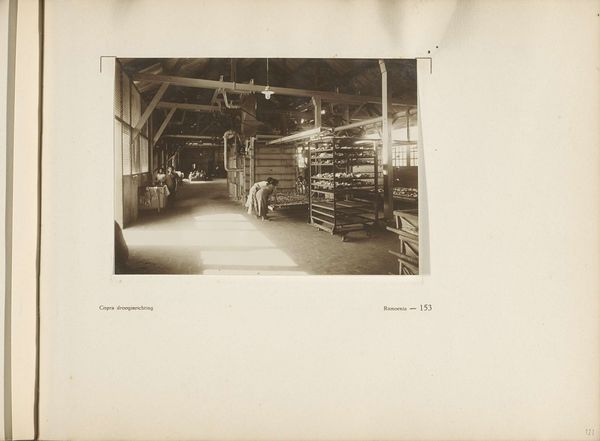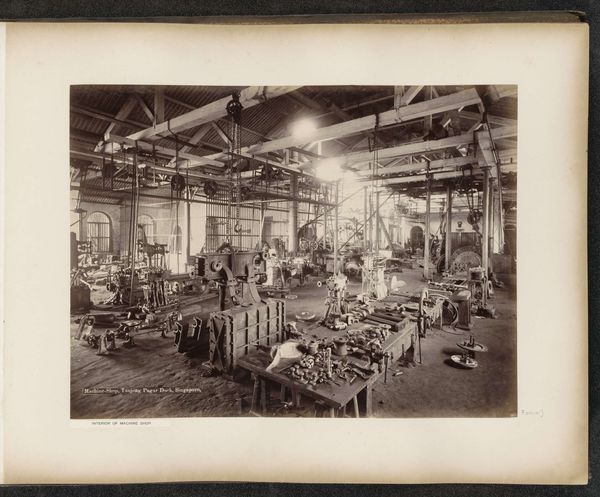
Interieur van het nieuwe machinehuis met smederij van de Tanjong Pagar Dock Co. Ltd. in Singapore before 1905
0:00
0:00
grlambertco2
Rijksmuseum
photography, gelatin-silver-print
#
photography
#
gelatin-silver-print
#
cityscape
#
realism
Dimensions: height 268 mm, width 359 mm
Copyright: Rijks Museum: Open Domain
Curator: The Rijksmuseum holds this photograph taken before 1905 by G.R. Lambert & Co. Titled "Interior of the new machine house with smithery of the Tanjong Pagar Dock Co. Ltd. in Singapore," it offers a view into the island's industrial landscape. Editor: It's visually striking. The monochrome rendering and dramatic composition give the photograph a certain raw, industrial grandeur. There's an intense stillness within the image that contrasts to the heavy duty and productive intent of such an infrastructure. Curator: Yes, the image serves as an important document, demonstrating Singapore's colonial modernization. The Tanjong Pagar Dock was critical to Singapore's role as a trading port, especially with increasing international commerce. This photograph really emphasizes how technology has changed work and power dynamics in Singapore. Editor: I'm particularly drawn to the immense scale of the machinery and building: all this steel, all those beams, gears, and chains. It is impossible not to ask yourself, how were all of these materials sourced and fabricated in that time period? Who did the physical labor to build this shop and use these machines? Curator: A very crucial question, indeed, the building represents technological advancement. At the time, this level of industrialization had drastic societal consequences, reshaping Singaporean labor and economic dependency to maritime trade and related supply routes. The photo doesn’t directly show us that, but as an historical artifact it strongly implies the colonial control behind the rapid urbanization that changed lives of local laborers. Editor: Right. Gelatin-silver print, as a process, speaks to an interesting materiality of early photography but it also makes the socio-political conditions of that time ever so more remote to a contemporary audience. Still, this is a well composed photo, and that's why, over a century later, it stills resonate as a window to the global movement of production. Curator: Absolutely. By exhibiting this photo, we also prompt a look into what constitutes "progress" and at what cost, from labor conditions to the reliance on trade and shifting world power dynamics that affected local livelihoods. Editor: Indeed, beyond the visual appeal lies a deeper narrative. That materiality is very telling, as it prompts us to investigate production on multiple levels.
Comments
No comments
Be the first to comment and join the conversation on the ultimate creative platform.


